In the spring of 2016, I set up a Facebook group called ‘We Love Endpapers’. My idea behind it was to create a forum where like-minded people—booksellers, librarians, collectors, book designers—could share, or just drool over, pictures of particularly unusual or beautifully patterned endpapers as and when they came across them. I have always enjoyed the surprise of discovering a hidden gem of an endpaper when opening a book, and thought there may well be others out there who might like to join me in such a group. Sure enough, there are now over 2000 members, and I regularly get people coming up to me at book fairs thanking me for setting it up and saying how much they enjoy it!
One thing I have realised since setting up the group is how confusing the terminology of decorated paper can be. With that in mind, here’s a brief outline of the kinds of decorated papers you might come across when looking at books from the hand-press period. Many of the examples below have been taken from posts in the We Love Endpapers group (which, I should say, features books from all periods, including modern publications); I hope fellow group members don’t mind if I share them here.
Marbled Paper
The technique of marbling paper was developed in Asia (the oldest examples, from Japan, have been dated to the 12th century) before travelling west, to Persia, Turkey, and Europe. The decoration is achieved not directly onto the sheet of paper itself, but on a liquid called the marbling ‘size’ (‘a glutinous or viscid wash applied to paper, parchment, etc., to provide a suitable ground for gilding, painting, or other work’, OED). Marbling paints are then sprinkled onto the size, in a flat tray, where they can either be left to float, or be manipulated with tools such as needles or combs to produce the decoration desired; the paper is then laid onto the size and the pattern thus transferred onto the paper. There is a huge variety in the patterns which can be achieved:
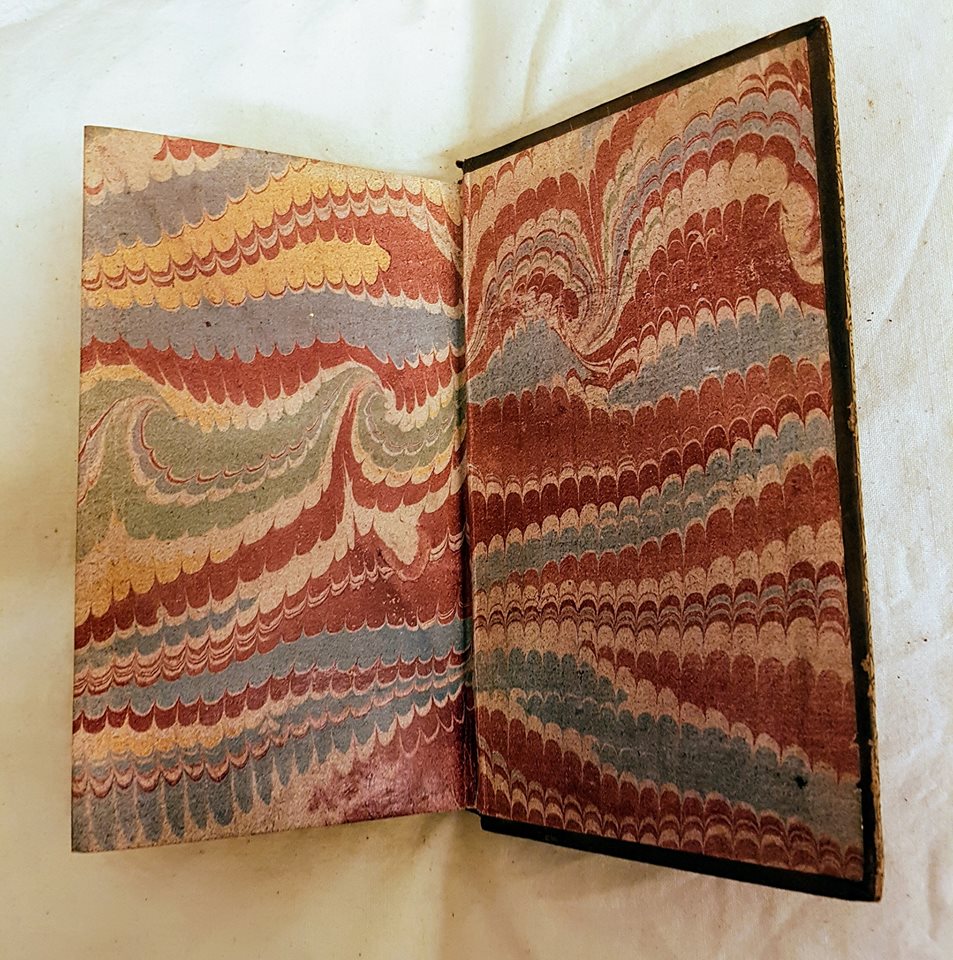
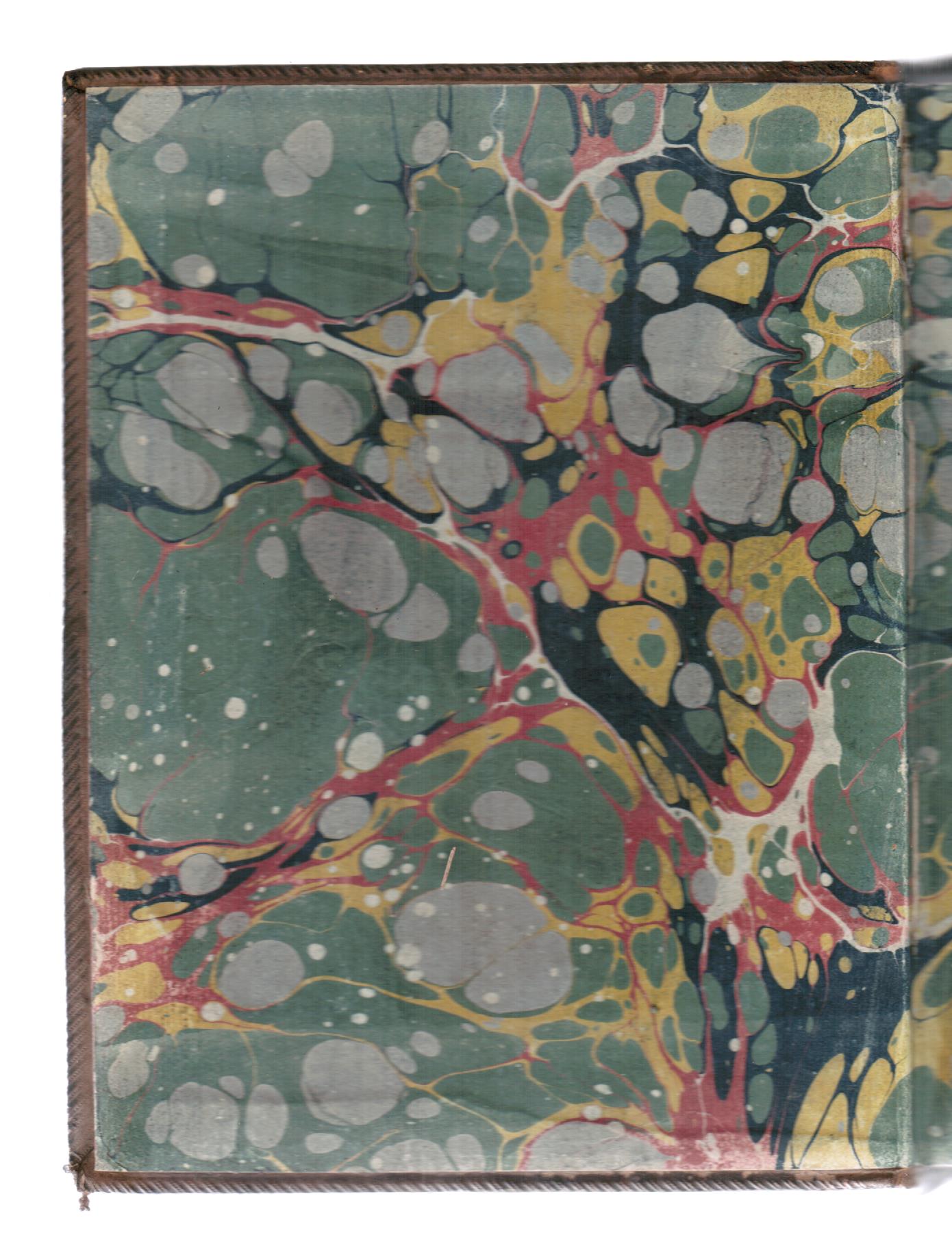
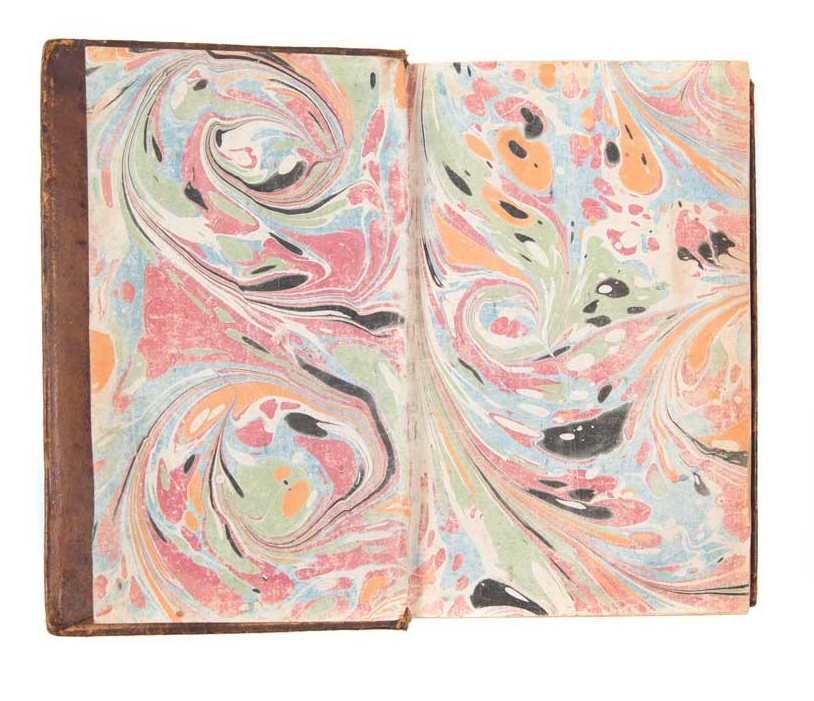
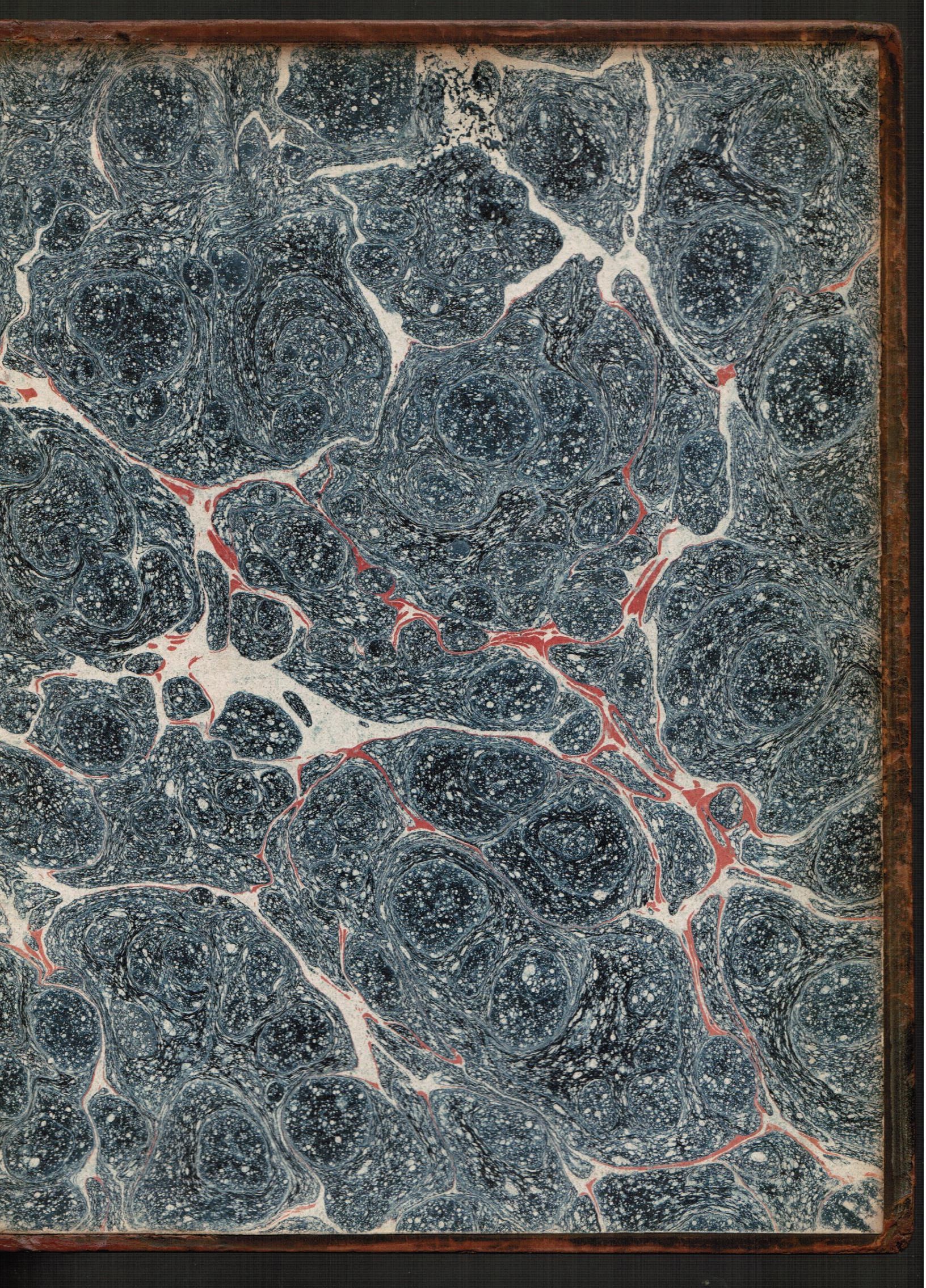
Depending on the tools used, and how the marbler decided to manipulate the inks, you can find, for example, combed marbled paper:
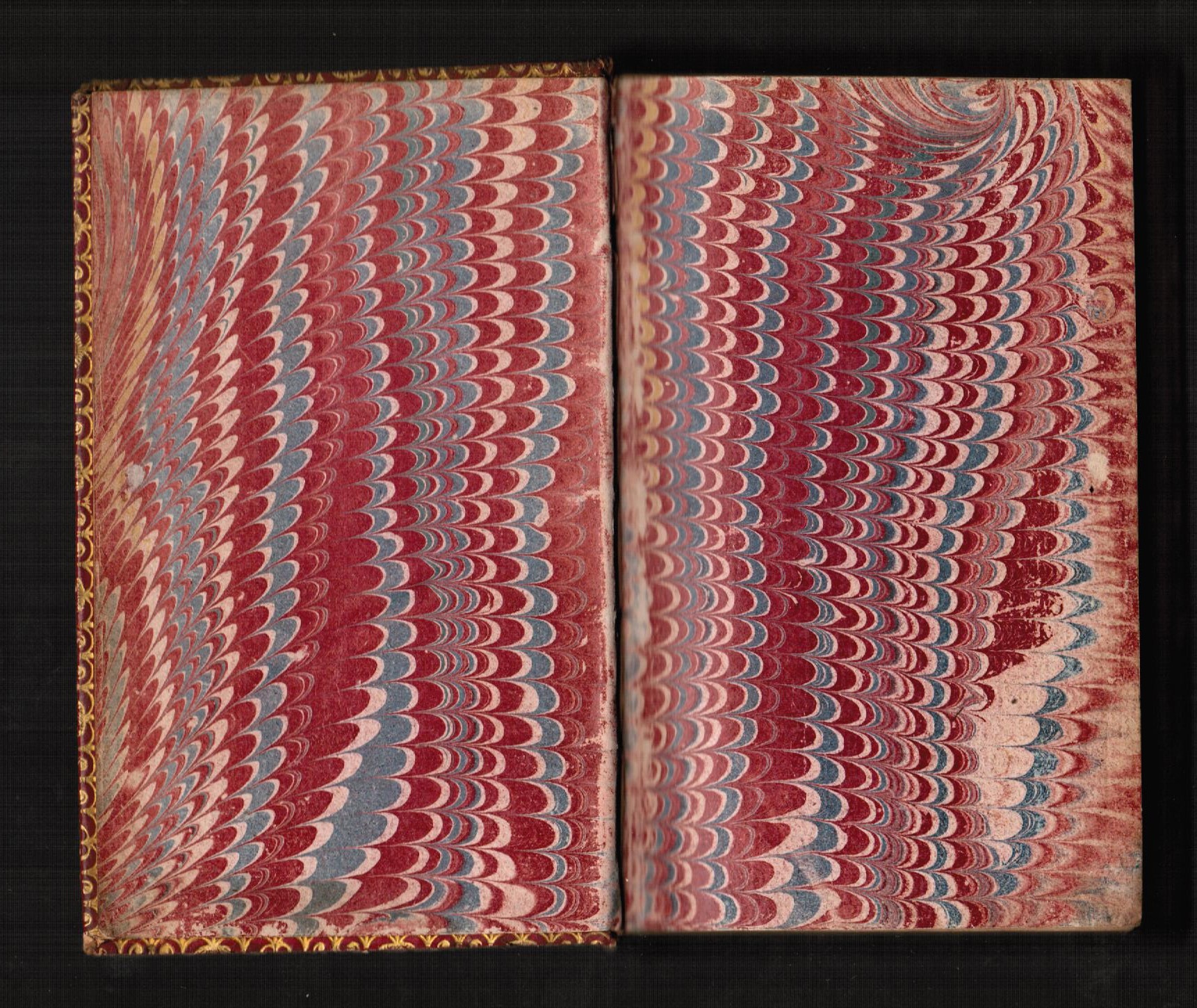
or curl (also called snail) marbled paper:
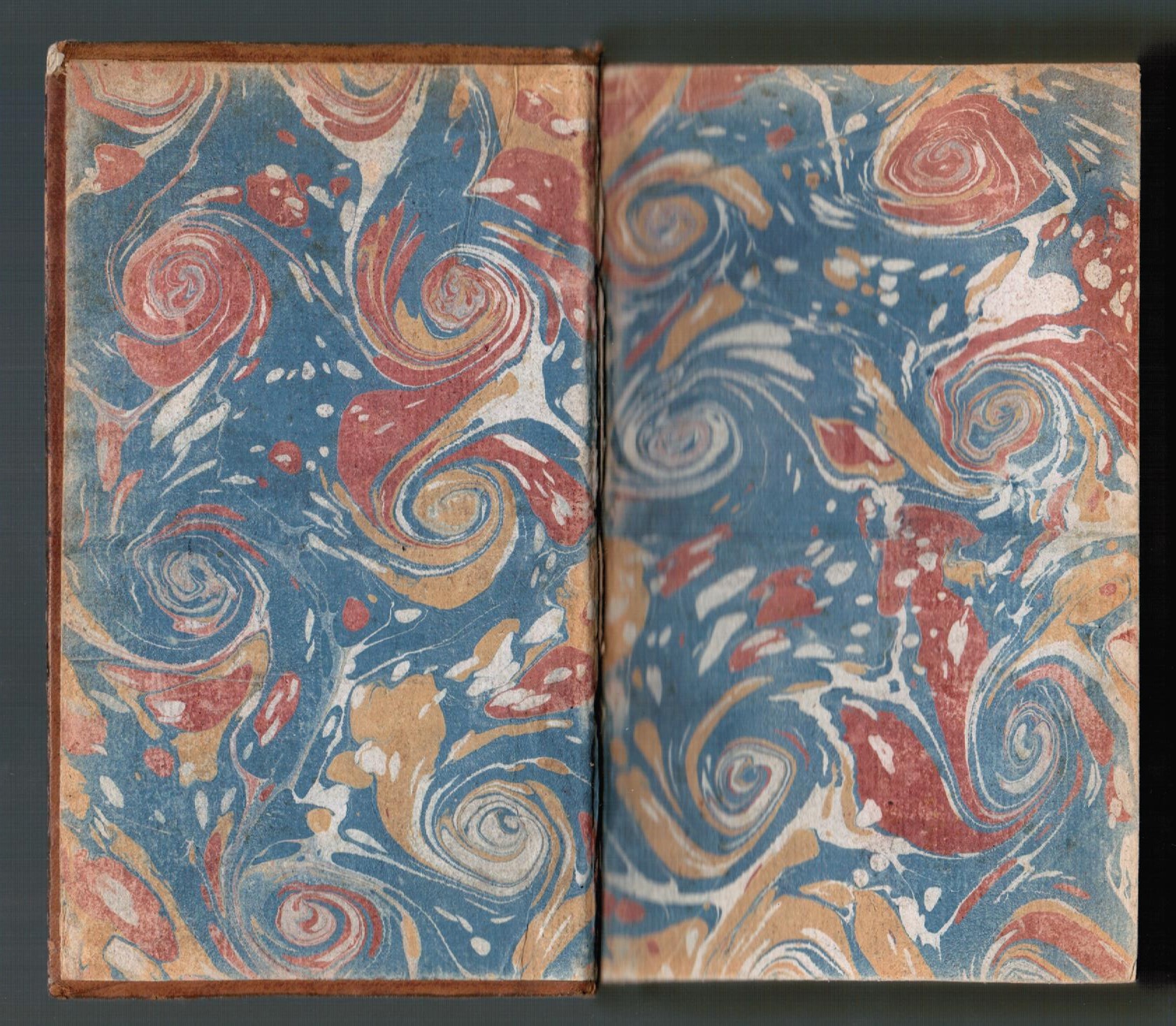
or maybe a 'Spanish wave', in which the paper has been pushed back and forth in the marbling tray to create a ruched effect:
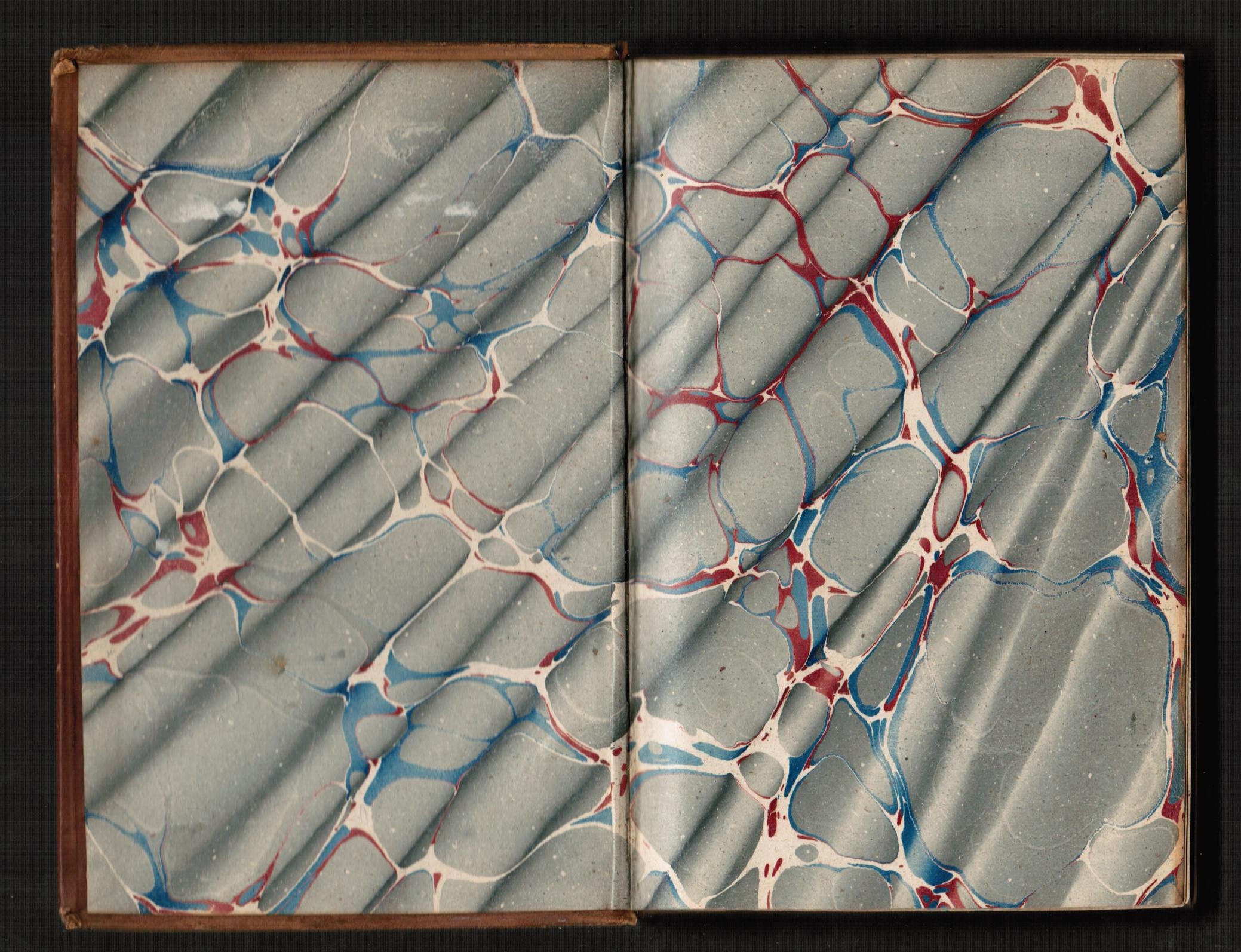
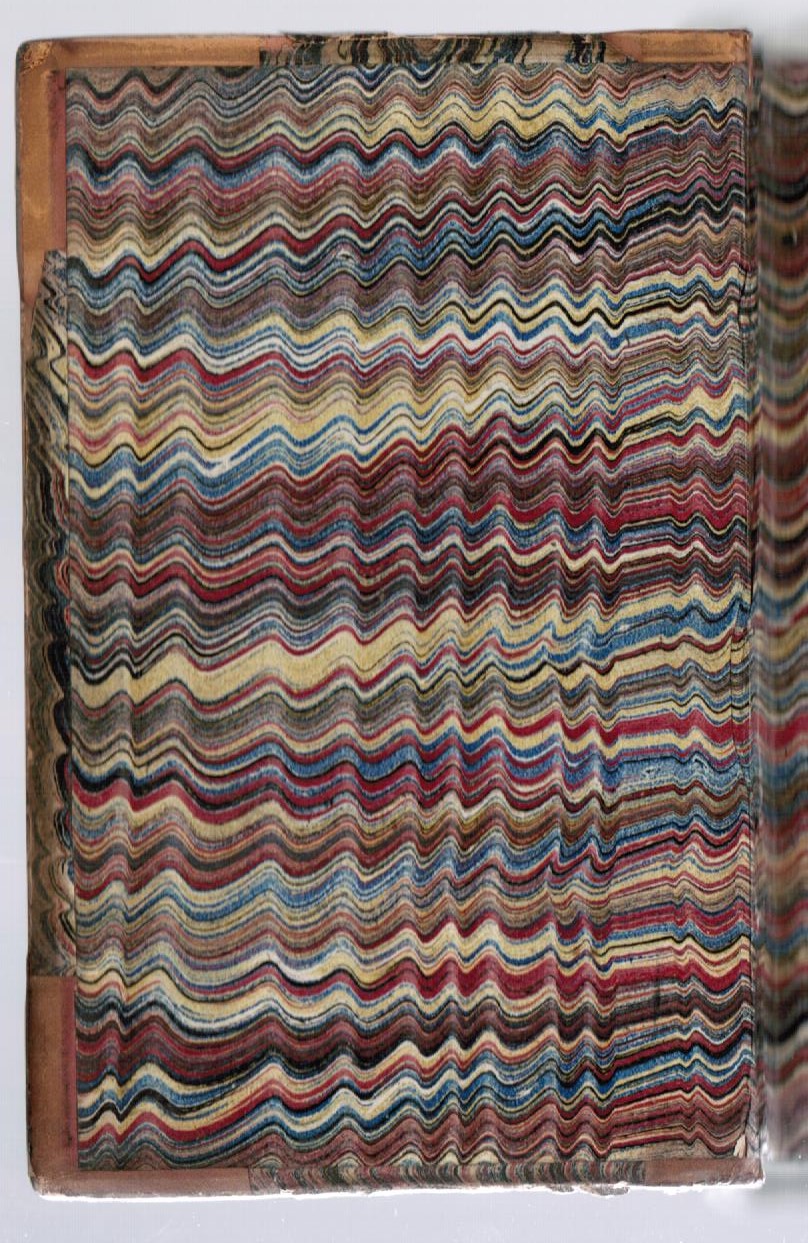
or tiger’s eye (also called sunspot) marbling:
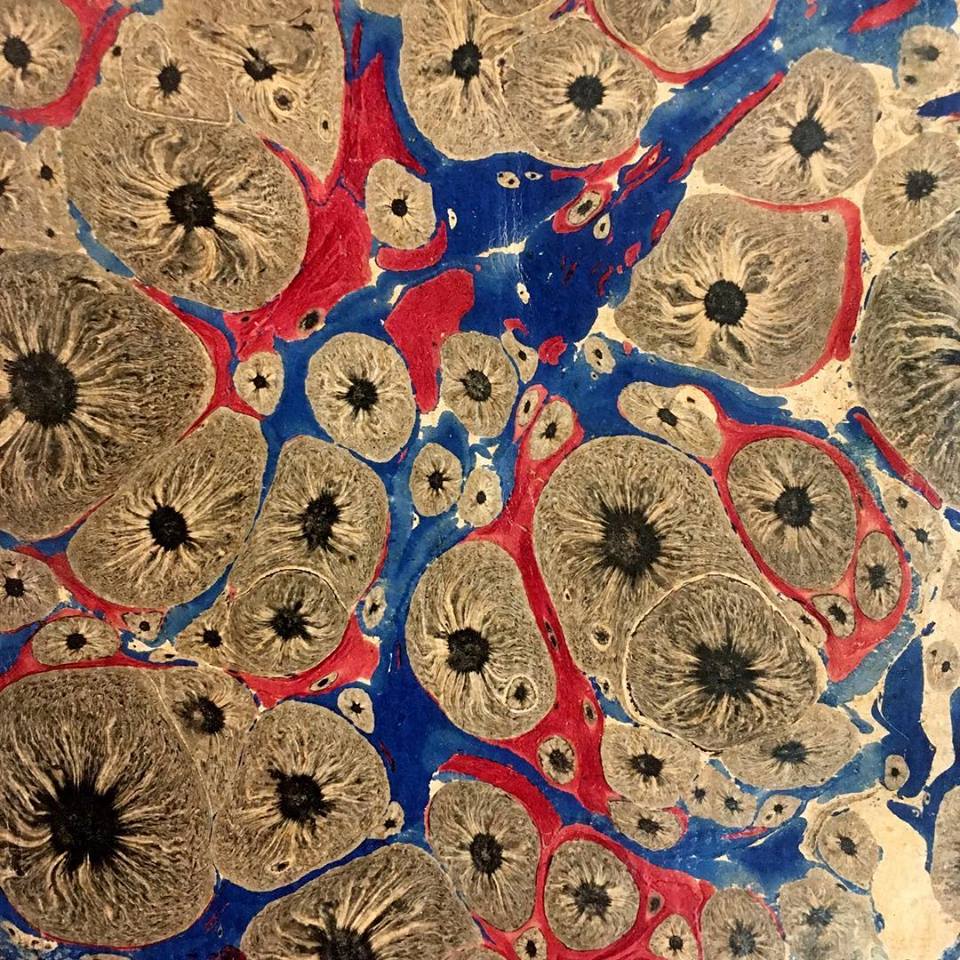
Sprinkled Paper
Sprinkling has been used to decorated books, both the leather and the fore-edges, since the 16th century. Sprinkled paper, whereby small droplets of paint are distributed over the surface of the paper by running a finger along a loaded brush, was cheap to produce. It was a particularly popular book covering in Germany, where it is known as Kiebitzpapier (literally, 'lapwing paper', as the speckled effect was thought similar to the pattern found on some birds' eggs).
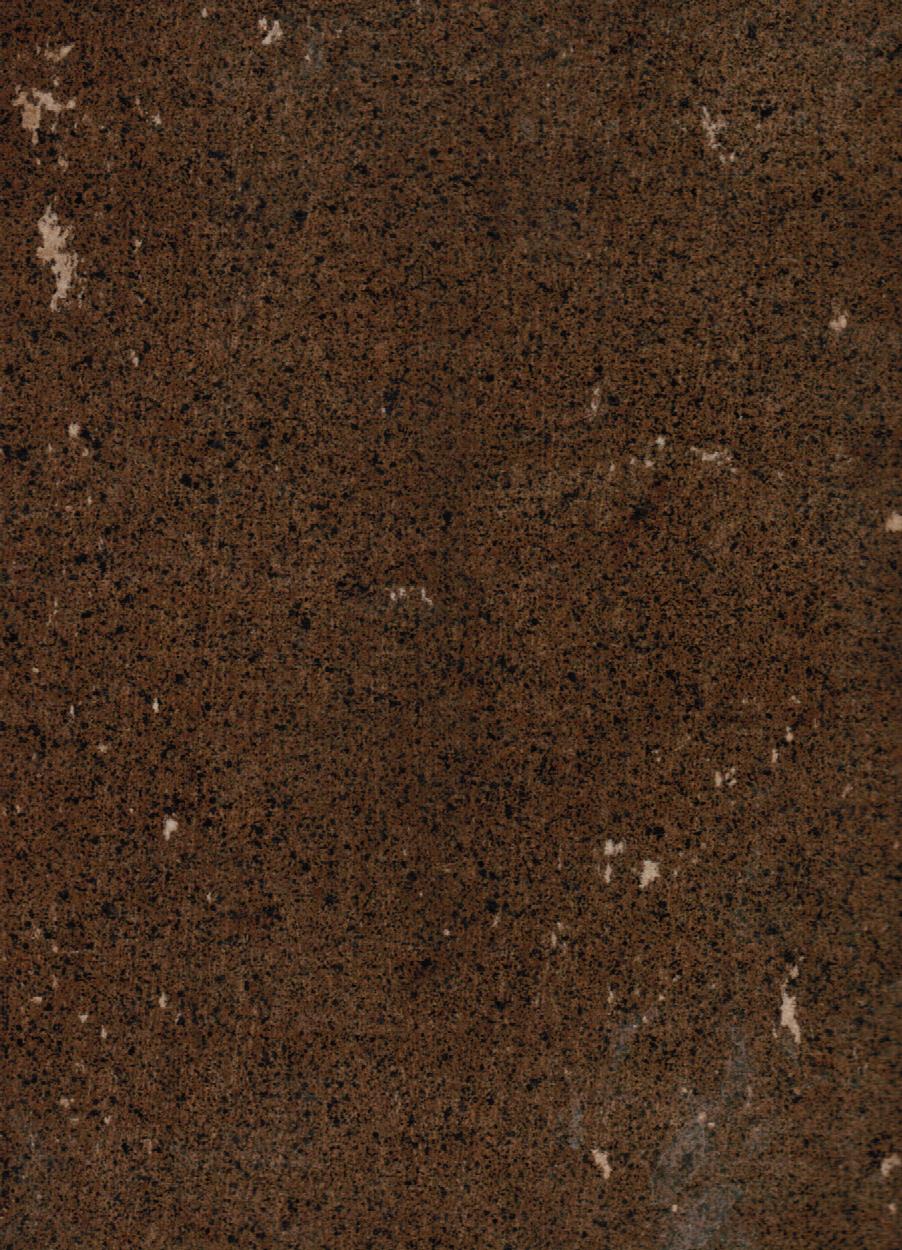
Printed Paper
Block-printed paper has its roots in textile printing (witness the old German term Kattunpapier, 'calico paper'). The earliest block-printed papers date from the end of the 16th century, but mostly one finds them from the 18th–early 19th century. The printing was done manually, using carved wooden blocks, each colour (if there was more than one) being printed individually and left to dry before applying the next, or a black-and-white design was then perhaps coloured by hand. The French papier dominoté is a good example of the type, but such printed papers were produced all over Europe.
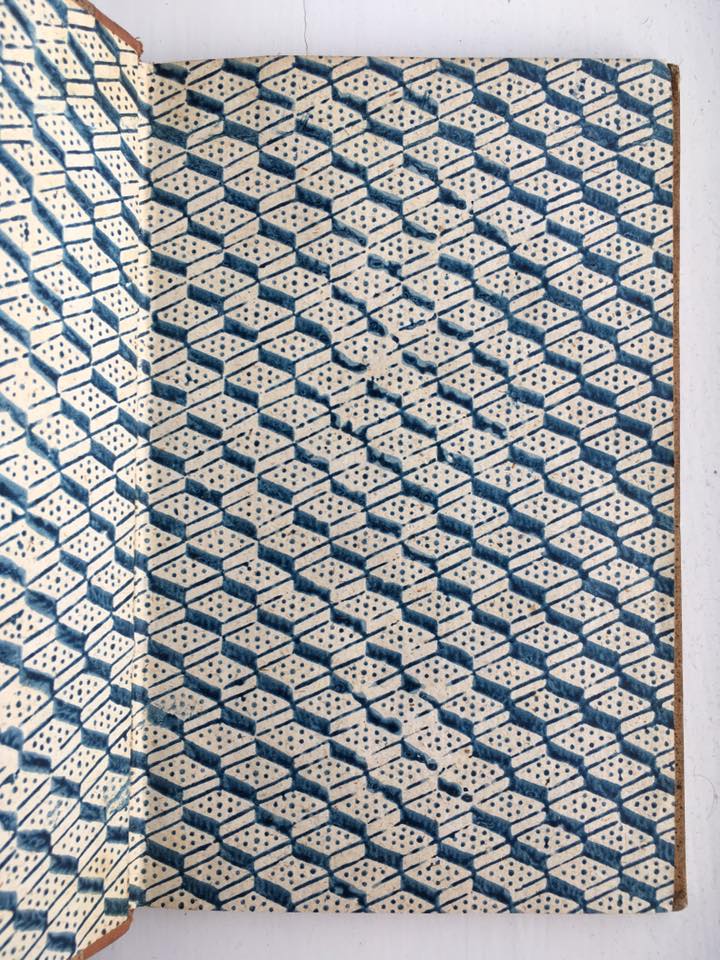
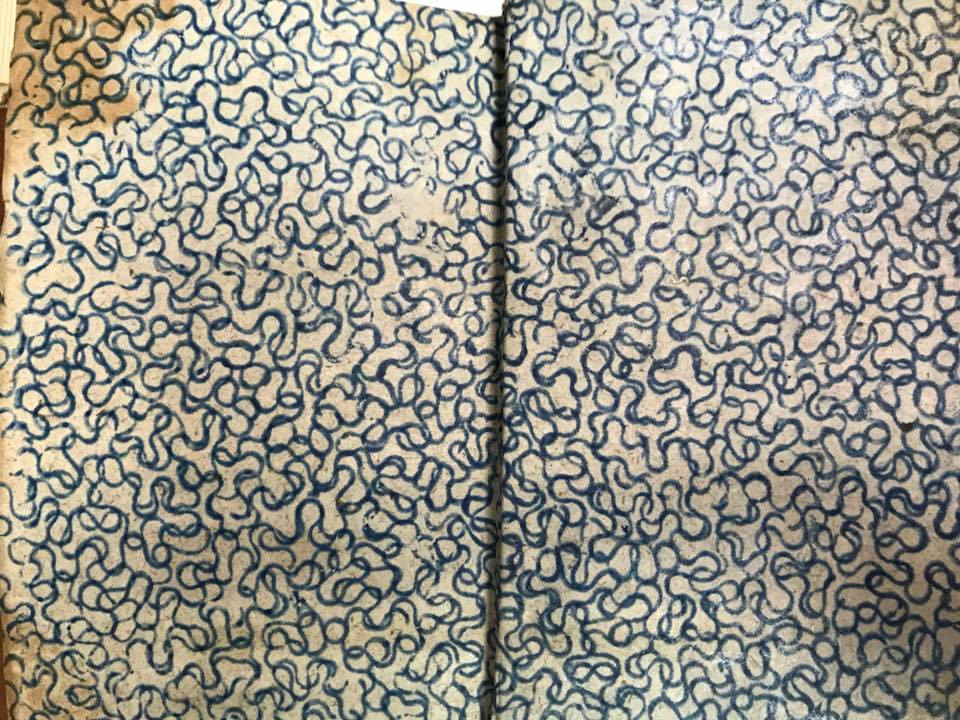
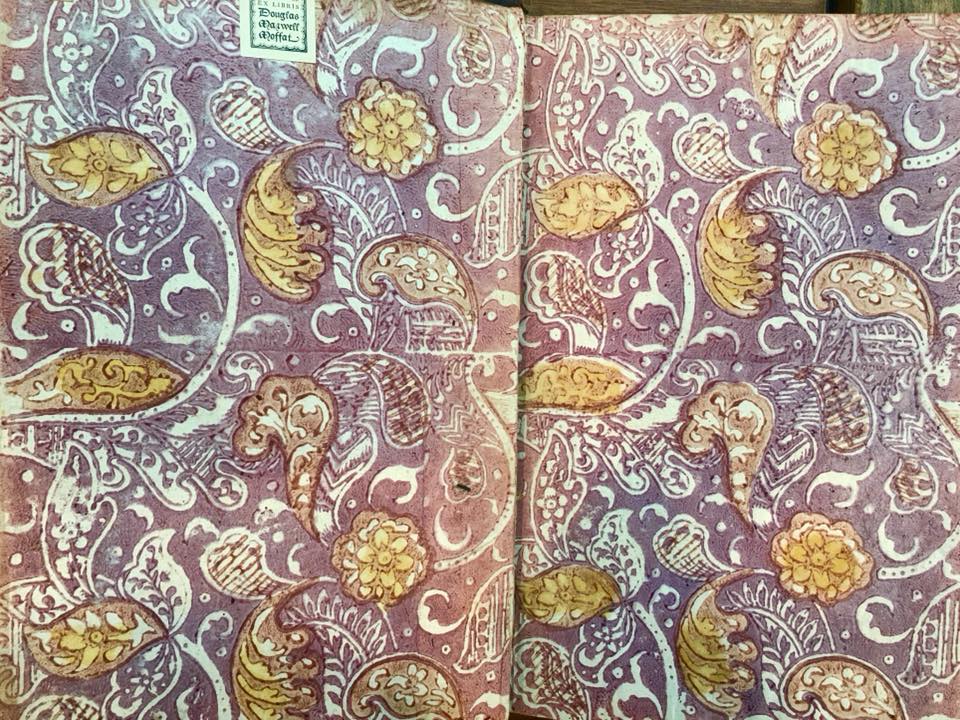
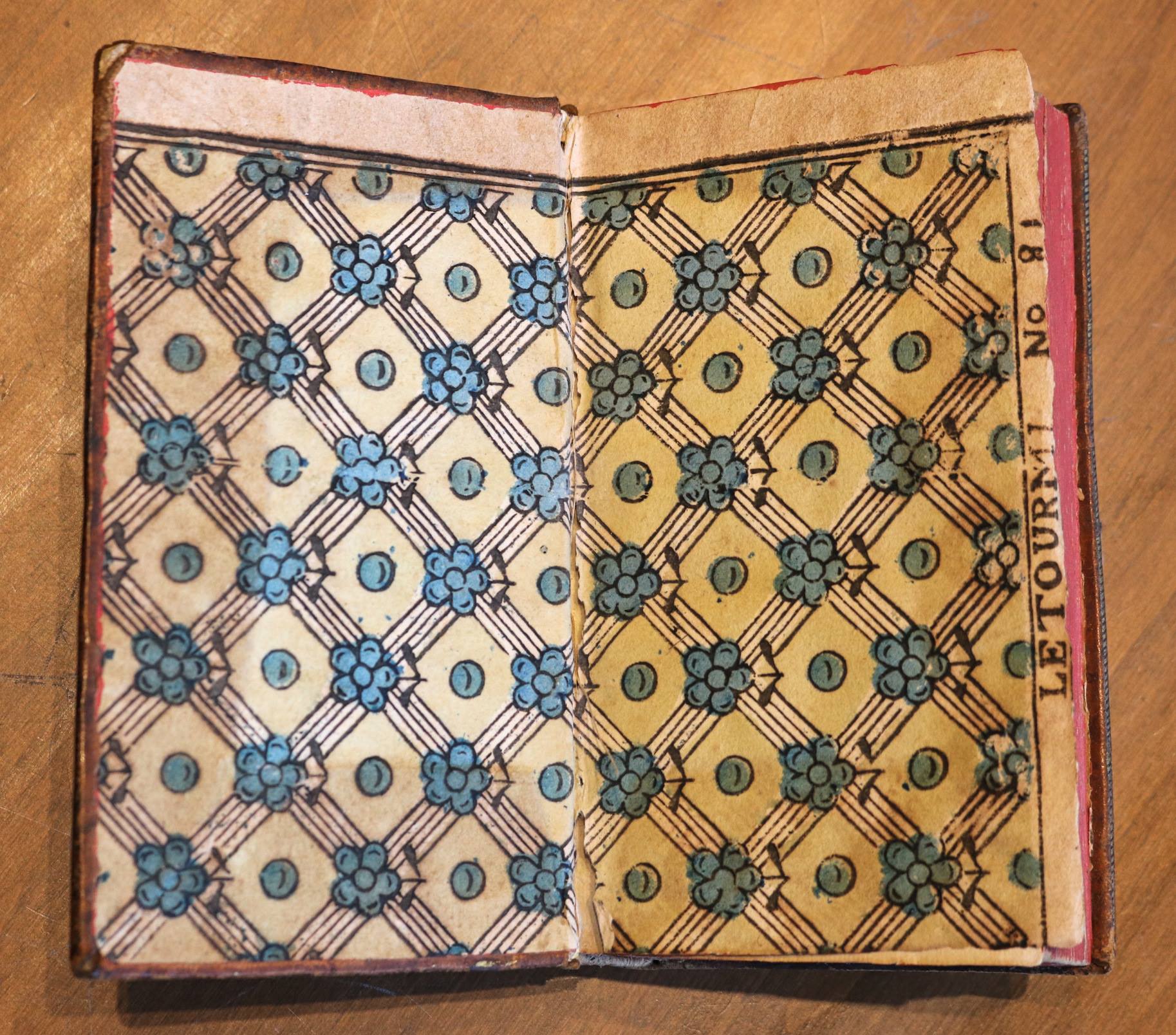
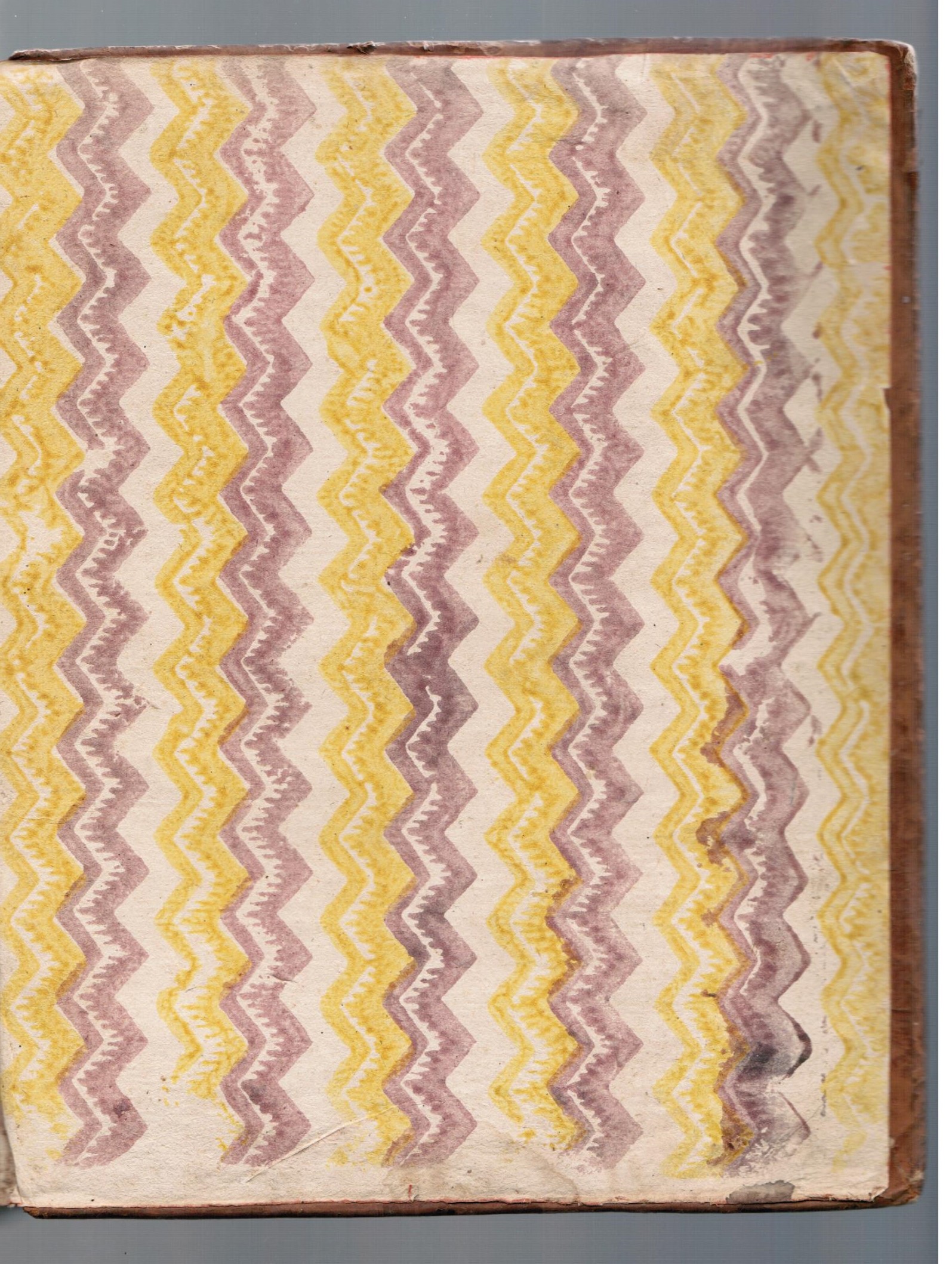
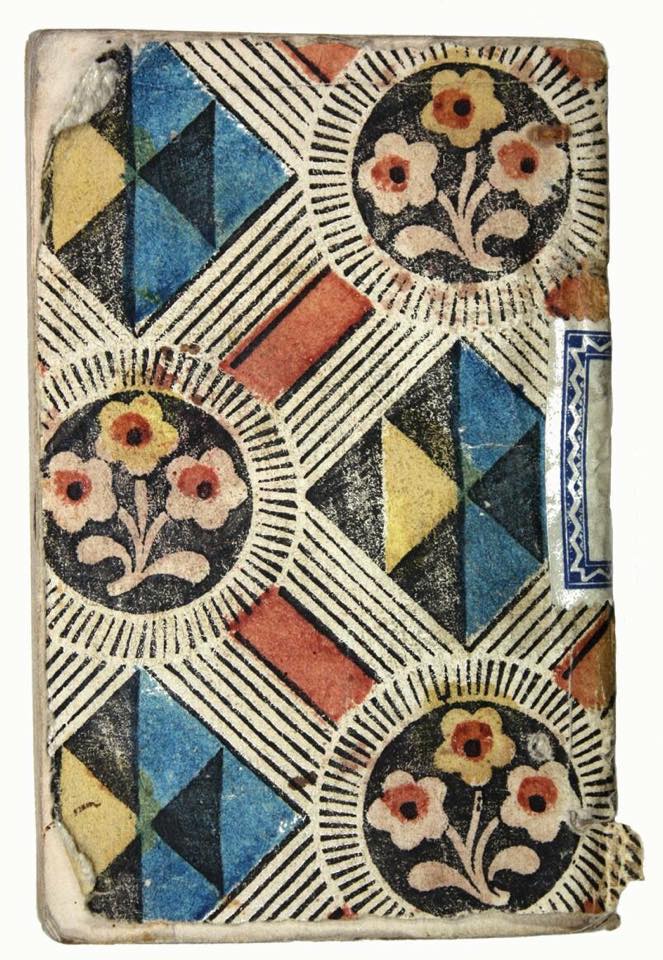
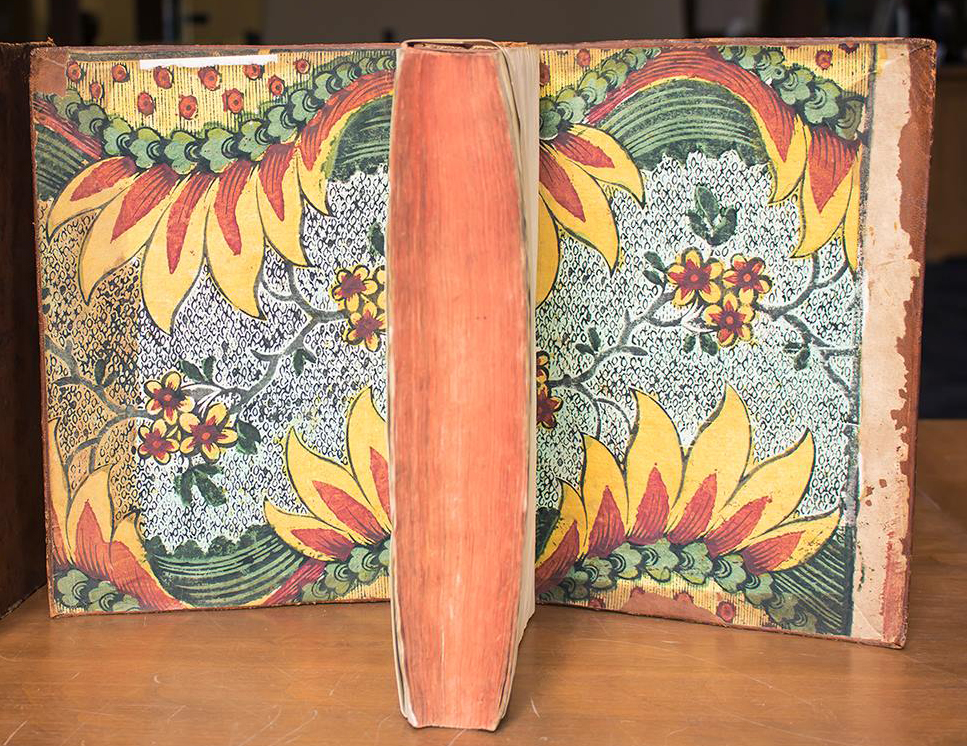
Embossed Paper
Embossing, where the paper was altered by means of a raised texture, was also popular in the 18th century, e.g. in the German Brokatpapier (‘brocade paper’), which employed a metal layer in either the motif or the background.
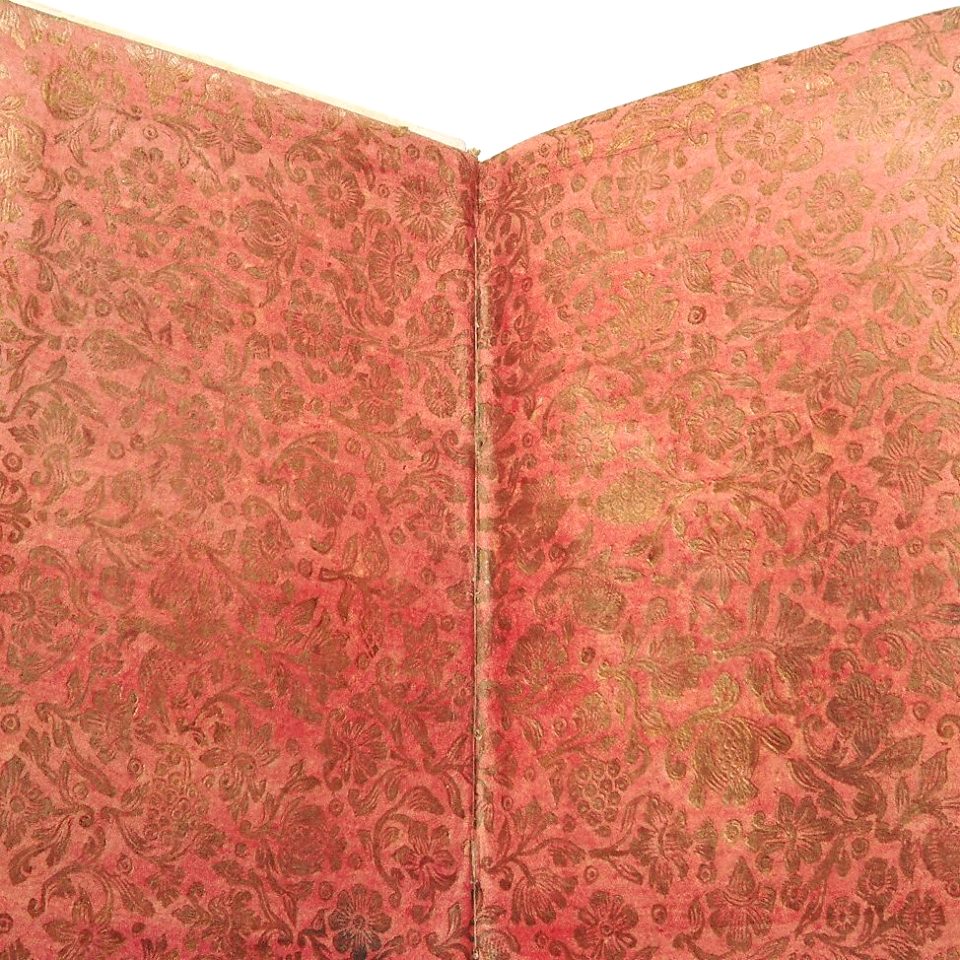
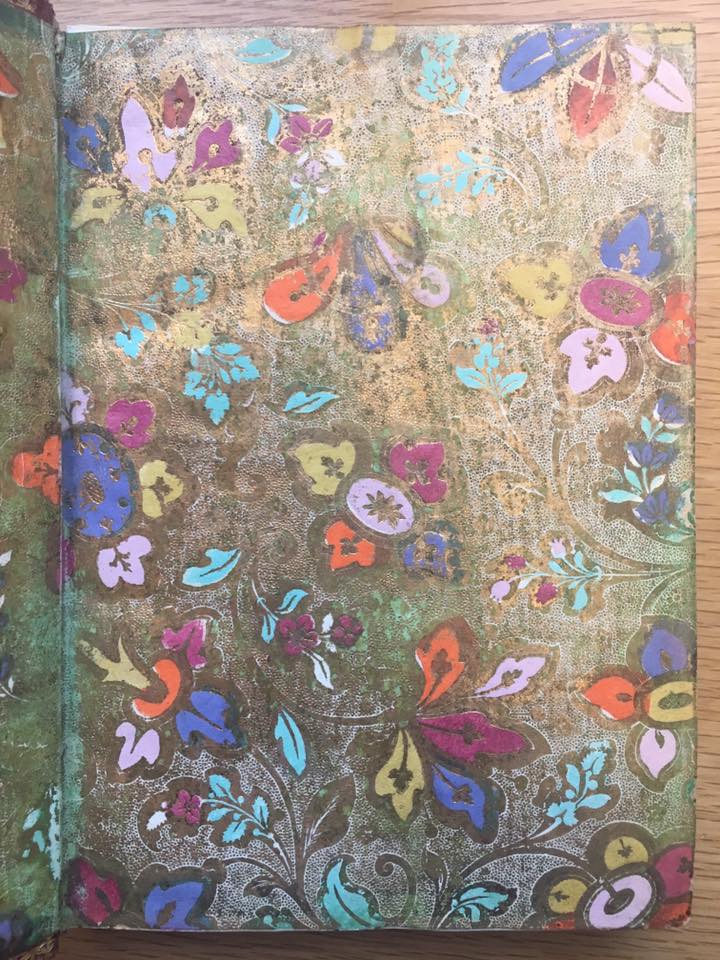
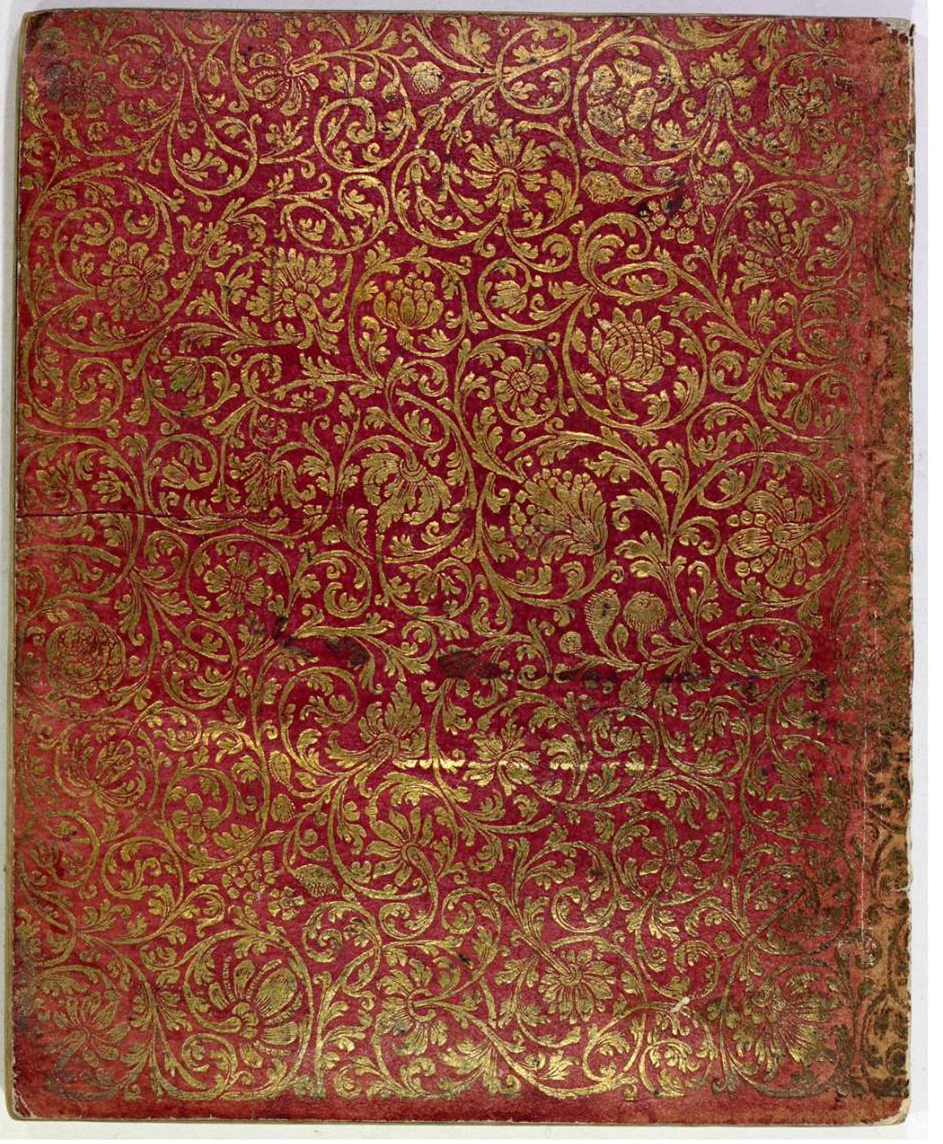
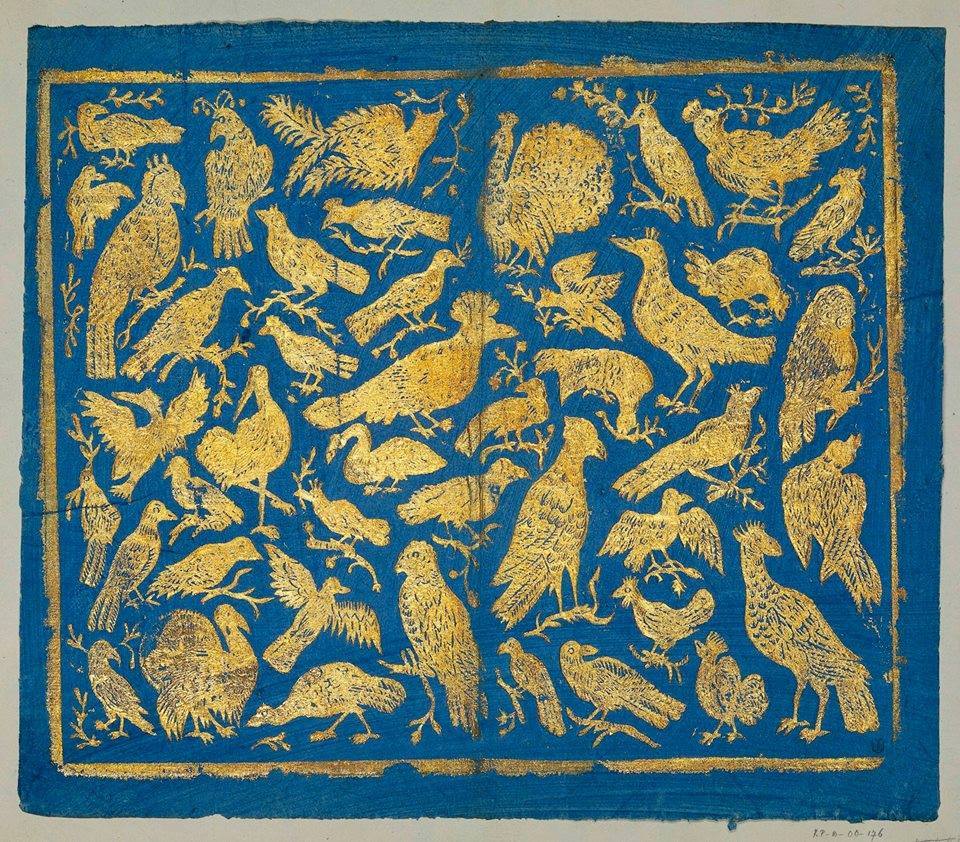
So-called ‘Dutch gilt paper’ falls into this category, too. Though the name is a misnomer: they were actually produced in southern Germany, and northern Italy, then exported to Britain via the Netherlands.
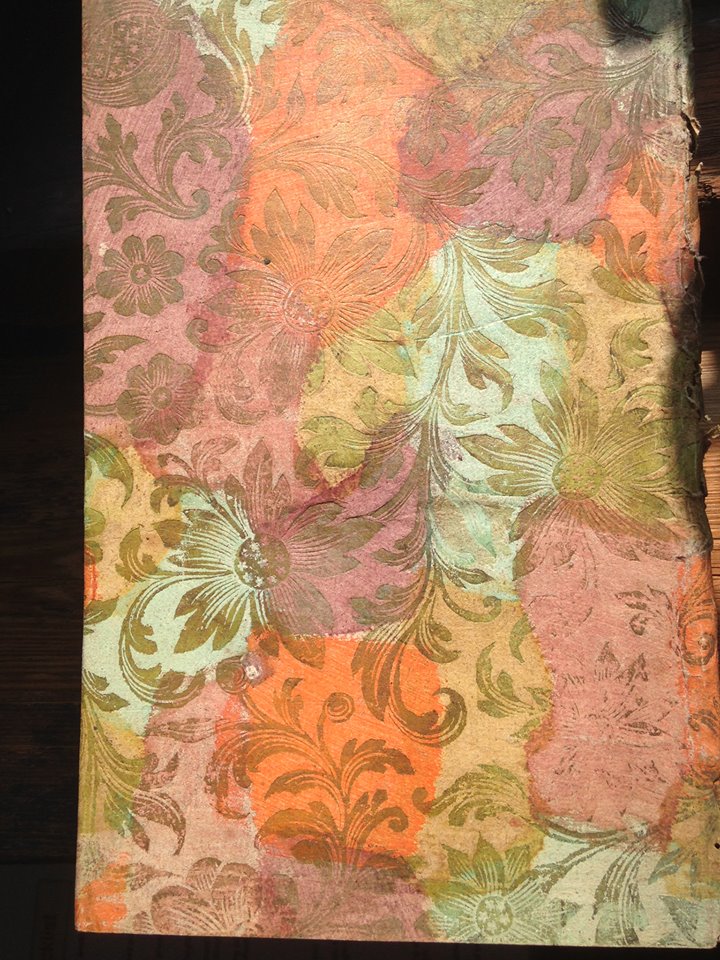
.jpg)
Paste Paper
In a technique used from about 1650 onwards, paper was covered—usually entirely—with coloured paste and decorated to create a pattern. Tools used could be brushes, stamps, rollers, combs (or often simply the fingers!), or metal plates or woodblocks were also sometimes used to create a design on the paste-covered surface.
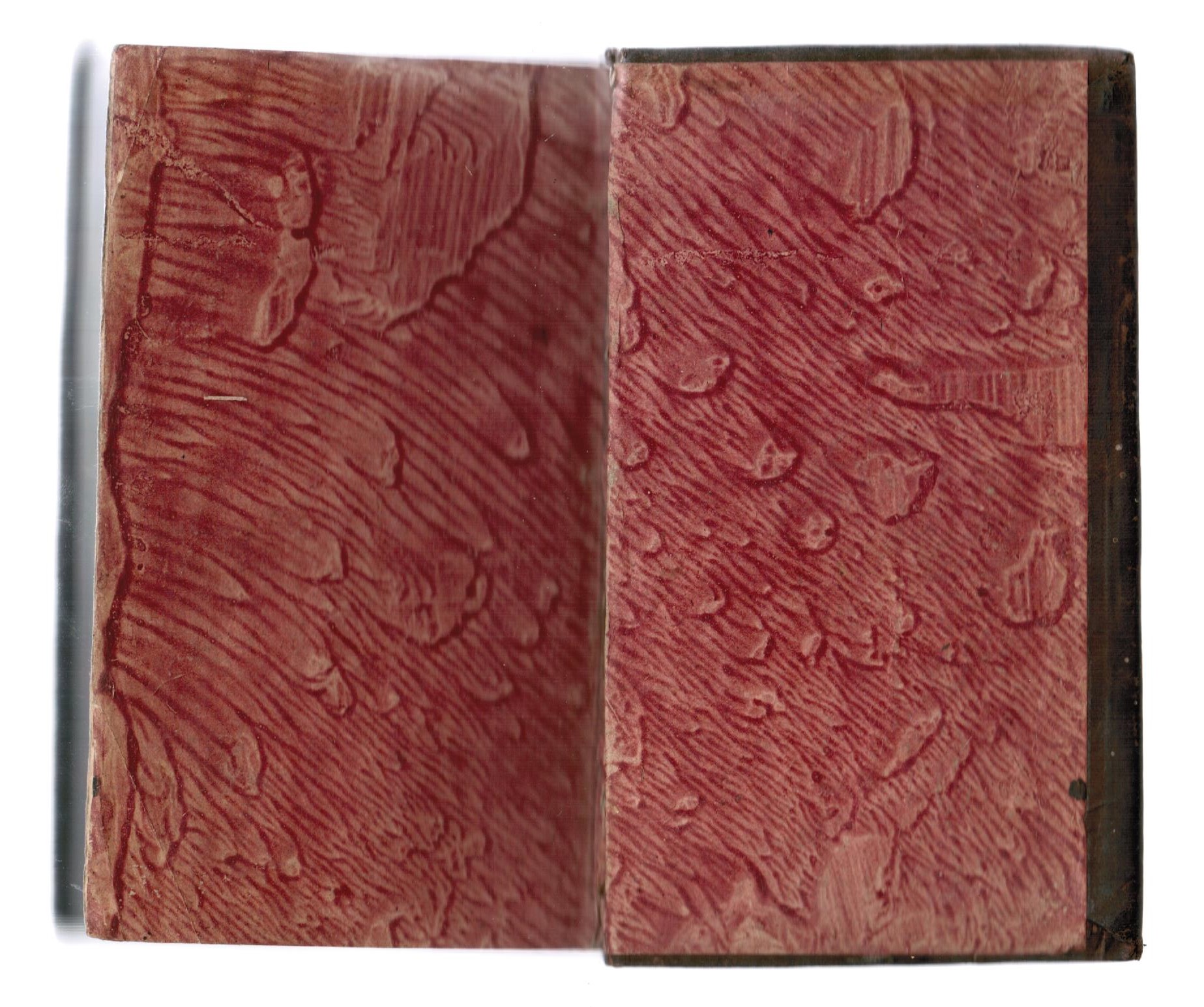
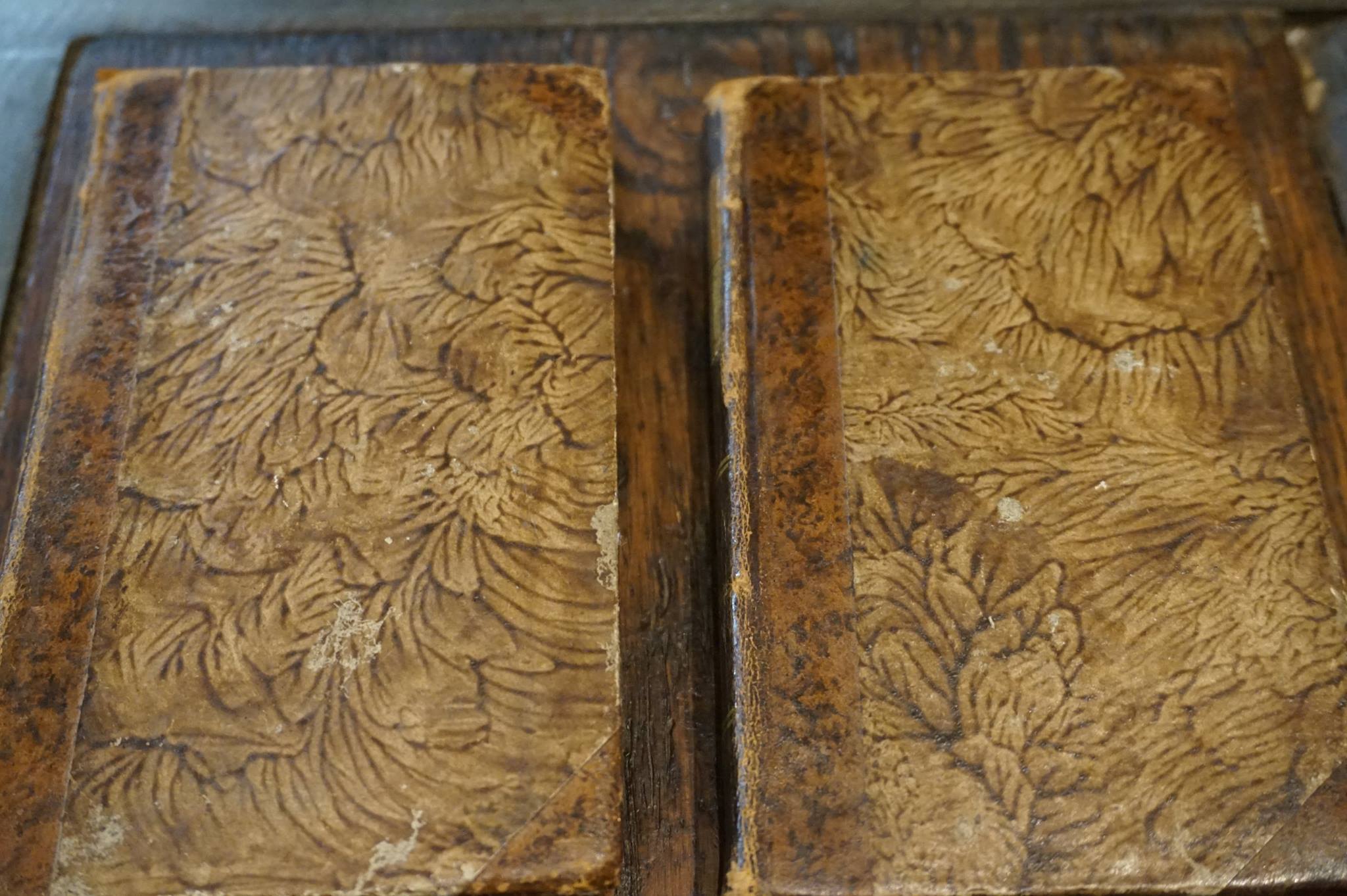
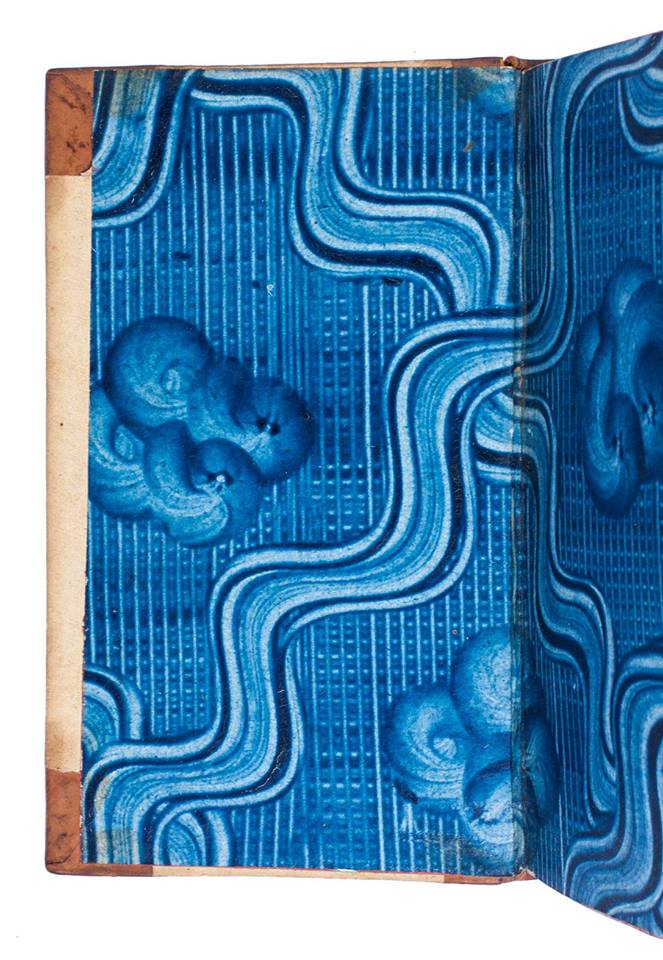
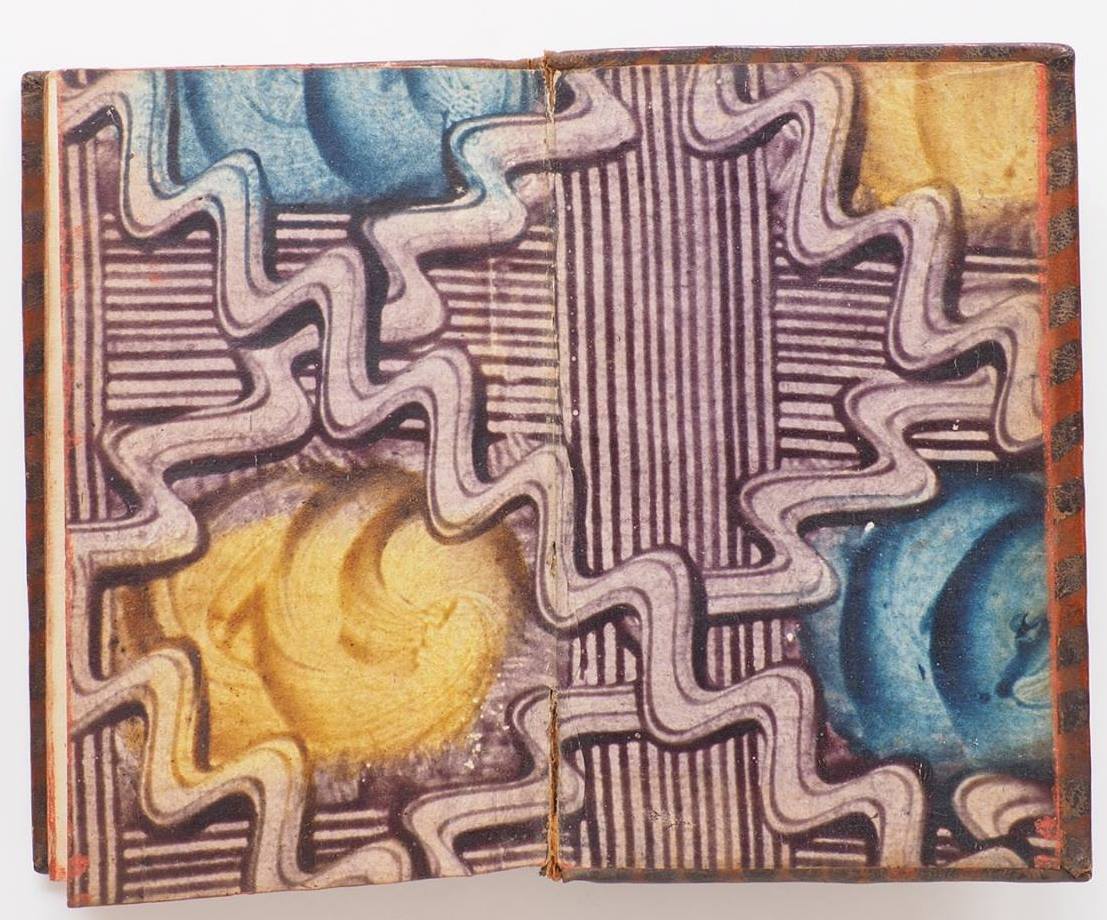
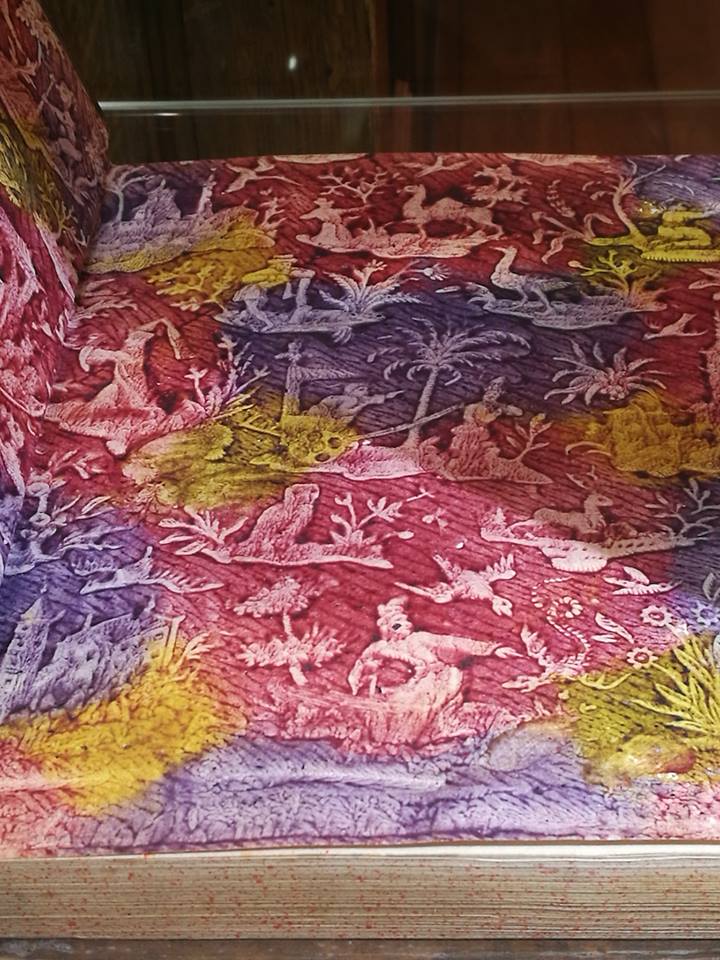
If you enjoyed these papers, and are on Facebook, please do join us at We Love Endpapers.


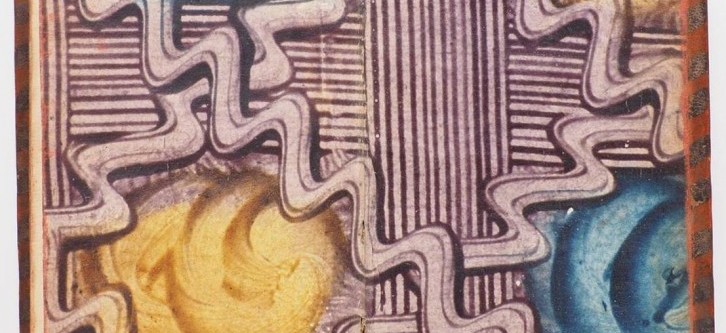






















.jpg)




